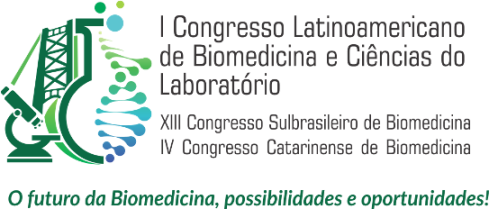Dados do Trabalho
Título
EVALUATION OF THE ANTIFUNGAL ACTIVITY OF LMM6 COMPOUND AGAINST CANDIDA TROPICALIS, BY TIME KILL CURVE ASSAY
Fundamentação/Introdução
Candida tropicalis is considered an opportunistic pathogen, which has been frequently isolated in cases of candidemia. In recent decades, this species has been showing resistance to conventional antifungal agents, which raises the need for the search of new antifungal therapies. Recently in our laboratory, was identified through drug repositioning, a molecule (LMM6) that was chemically similar to the hits compounds, that demonstrated promising antifungal activity against different Candida species.
Objetivos
To evaluate the antifungal activity of LMM6 compound against C. tropicalis, by time kill curve assay.
Delineamento e Métodos
After determination of the minimum inhibitory concentration (MIC) through broth microdilution method, as proposed to the Clinical and Laboratory Standards Institute (M27-A3), the time kill curve assay was performed. For this, a standard strain C. tropicalis (ATCC 750) was treated with LMM6 compound in the concentration of MIC (32 μg/mL), 2xMIC (64 μg/mL) and 4xMIC (128 μg/mL) in a 24-well plate and incubated at 35ºC. The Fluconazole (0.25 μg/mL) was used for comparison. In different times of incubation (0, 2, 4, 6, 8, 12, 24, 28 and 36h), aliquots were collected, diluted in Phosphate Buffered Saline, plated in Sabouraud Dextrose Agar and incubated at 35ºC for 24h to Colony Forming Units (CFU) determination. The experiment was performed in triplicate.
Resultados
The LMM6 compound and the fluconazole in all tested concentrations demonstrated a decrease of approximately 3 log of CFU of C. tropicalis in relation to control, corresponding to 99.9% of reduction of fungal growth in 12h. In 24 h, the concentration of 4xMIC stands out, having similar activity to fluconazole in the 0.25 μg/mL concentration, as both reduced approximately 4 log of CFU, equivalent to decrease of 99.99% of yeast growth. Finally, at 36 h the compound at 4xMIC concentration showed a reduction of approximately 3 log of the CFU, being more effective than the commercial antifungal fluconazole that did not demonstrate a reduction of the fungal growth in the same time evaluated.
Conclusões/Considerações Finais
Conclusion: Thus, it was possible to observed the antifungal efficiency in vitro of the compound LMM6. Besides that, finding that the compound demonstrated similar and even increased activity against C. tropicalis than fluconazole, which is a commercial antifungal widely used in cases of candidemia, showing to be a promising agent for antifungal therapy.
Palavras-chave
Candida tropicalis; antifungal activity; new compound.
Área
Tema livre
Instituições
Universidade Estadual de Maringá - Paraná - Brasil
Autores
Raquel Cabral Melo, Daniella Renata Faria , Glaucia Sayuri Arita, Patrícia Souza Bonfim-Mendonça, Erika Seki Kioshima
